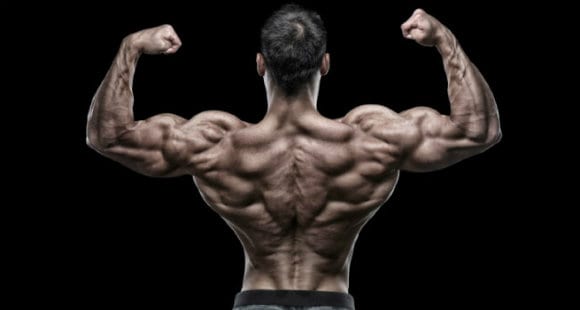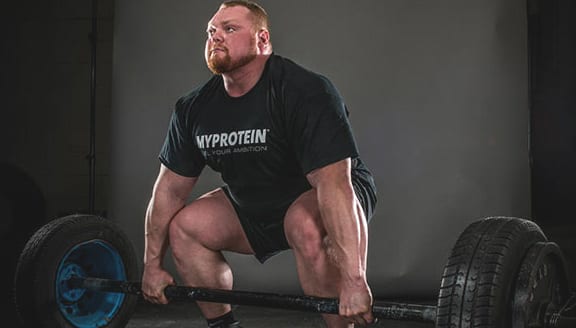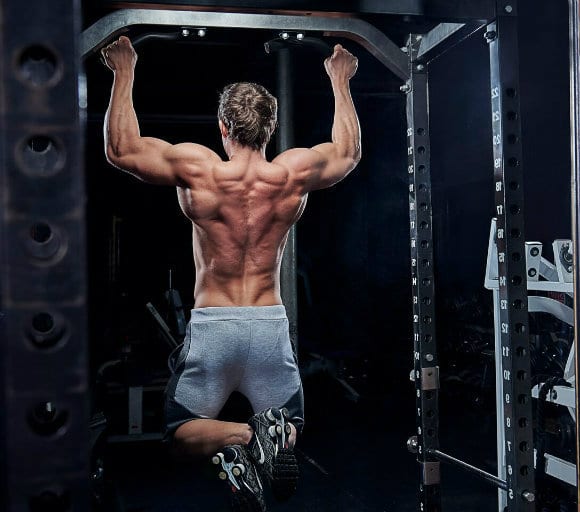By the healthiergang writer , fitness instructor and Powerlifting expert.
Strengthen the Back
Whether you are a bodybuilder, an aspiring bodybuilder, or just training to achieve exceptional lean muscle mass levels, know that back of the trunk, an area that starts from the last cervical vertebrae and ends at the level of the last lumbar vertebrae and which in gym jargon is called "back", occupies a fundamental role in achieving this goal.
As a boy, when I started my adventure in the gym, I immediately noticed that the back muscles did not progressdespite doing several sets of various exercises.
I couldn't even contract trapezius and lats when I tried to pose in the mirror and the rear view of my body was similar to that of a very thin person who had never trained, yet I had been training for more than a year.

In those days my sources of information were trade magazines, which featured various articles on how to develop these muscle groups. In these articles they were present mostly cards full of exercises, especially with machines and cables, practically the same tables with which the vast majority of bodybuilders train.
In these programs, the deadlifts and the pull-ups were considered an exercise like many others, perhaps to be inserted at the end of the program just to give "the coup de grace to the lats".
Still being an inexperienced guy I followed those programs in hopes of getting a dorsal opening similar to those of the bodybuilders I saw pictured in magazines, but without getting any results.
After 12 years, now that I have added several kilograms of muscle to my body and that above all I have succeeded in my intent to develop a very muscular back of the trunk, I want to share my knowledge about it, so that whoever is wondering how to achieve this goal, has concrete answers about it and can get the same or even higher results.
Anyone who has already read my articles knows how much importance I give to basic exercises with heavy loads. The back muscles are not exempt from these concepts, just as the muscles of the rest of the body are not.
Fundamental Exercises
I discovered on my skin and on that of dozens and dozens of guys I trained, that the two exercises that were mistreated in the articles I read as a boy, are instead the most effective for building the mass and definition of the back muscles, and not only.
Until I was able to properly perform an adequate amount of pull-ups, my lats didn't grow an inch. The same happened with deadlifts. Once I incorporated these two "pillars" into my training sessions, the results were not long in coming. In recent years, I have not even performed anything other than these two exercises to train my back.
A little anatomy
Anatomically, this part of the body is composed of several synergistic muscles but also different in structure and function.
The largest, strongest and most visible are the spinal erectors placed in depth, the great dorsal which starts from the lumbar area and is inserted on the humerus and the trapezius which occupies the entire upper central half; (smaller muscles such as the rhomboids and the teres major work in close synergy with the larger muscles that I have just mentioned, so their maximum level of development is directly proportional to that of the great dorsal and trapezius).
Making these muscles hypertrophic is the key to having a massive back.
The main functions of these muscles are extension of the hip and spine in the case of spinal erectors which, however, perform this movement in synergy with the trapezius and the great dorsal and the extension and adduction of the humerus, which can occur both when the humerus is completely extended above the head, a function mainly borne by the great dorsal and the large round, both when the humerus is perpendicular to the trunk, a function of the great dorsal, the great round, the trapezius and the rhomboids.
The functions of these muscles, however, are many others, but in order not to expand the text too much I have limited myself to briefly describing those that represent the trajectory of the exercises in question.
1. Deadlift
When the deadlift is performed, a powerful extension of the hip and spine occurs.
According to the load used, all the muscles I have described are activated in synergy, with greater emphasis on the spinal erectors, which when they have optimal development levels, give thickness to the back by literally pushing "out" the trapezius, thus highlighting this muscle.
The deadlift is a "fundamental" exercise that cannot be renounced, also because it is not only a builder of mass and strength for the back, but also provides a powerful stimulus for the hamstrings and the gluteus maximus muscle. which are activated synergistically with the muscles of the upper body to lift the barbell off the ground as they are also hip extensors.
However, their intervention is reduced if the bar is further away from the floor.
If it is your interest to emphasize the muscles of the upper body more, you can opt for the version of raised deadlifts., starting with the barbell resting on the safety blocks of the rack at a distance of 40-50 cm from the ground. If you want a proof of what I am saying, I invite you to view the images depicting the backs of powerlifters, weightlifters and strongman, all athletes who perform the deadlift regularly.
If you want some examples in the field of bodybuilding, just mention Ronnie Coleman, Jonny Jackson and Franco Columbu. When the humerus is completely extended over the head, its extension and adduction is carried out by the great dorsal and great teres muscles, as occurs in pull-ups.

2. Pull-ups
This exercise is able to develop real "wings" in the back of the trunk. The alternatives to this exercise are the pull-ups at lat-machine or to other types of machinery that allow vertical traction, but their effectiveness is significantly lower.
Here too, if you want concrete examples to support what I'm saying, look at the backbones of gymnasts, calisthenics, all athletes who perform frightening numbers of pull-ups both bodyweight and weighted.
On the other hand, when the humerus is stretched perpendicularly to the trunk, in carrying out the movement to bring it back, the great dorsal, large rotunda, rhomboid and trapezius are involved in an exercise that takes the name of rowing. This exercise allows you to synergically activate multiple back muscles and for this reason its effectiveness is unquestionable.
As for the tractions, the variants with dumbbells and barbells and free body and not with machines would be preferred. Let us remember that machines were invented to facilitate movement, which goes against the principles of adaptation that underlie muscle hypertrophy and supercompensation.

Role of the Elbow Flexors
The elbow flexors, i.e. brachial, brachial and brachioradial biceps, are muscles that are part of the arm, but they play a fundamental role in back exercises, since in addition to the extension and adduction of the humerus, in these movements there is also a flexion of the elbow.
All of you will have experienced burning in the elbow flexors while performing pull-ups and rowing, resulting in muscle soreness in the days following the session. This is because the elbow flexor muscles receive a very heavy load during the back exercises and therefore remain sore.
"The adaptation of the elbow flexors is a direct consequence of the execution of pull-ups and rowing, so avoid listening to the advice of the bodybuilder on duty convinced that you have the ability to develop muscles with thought, who tells you to pull with the elbows to exclude biceps or other such nonsense.
If the elbow flexors are the weak link in the kinetic chain, they should be strengthened with deadlifts, pull-ups and rowing. Only in this way will they adapt properly to the burden imposed on them and allow you to conclude the sessions due to systemic and non-sectorial fatigue caused by their weakness. "


























